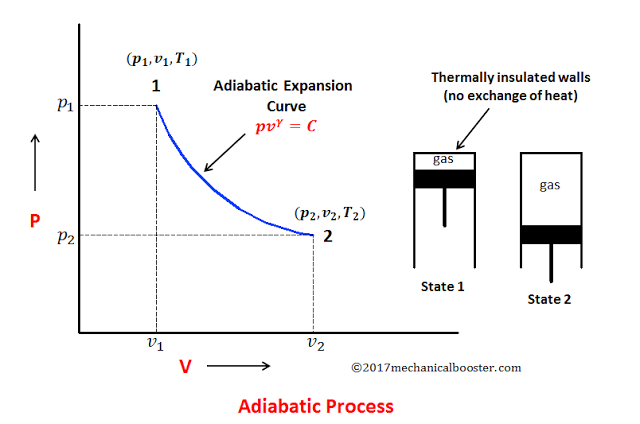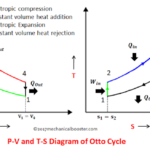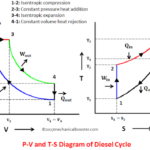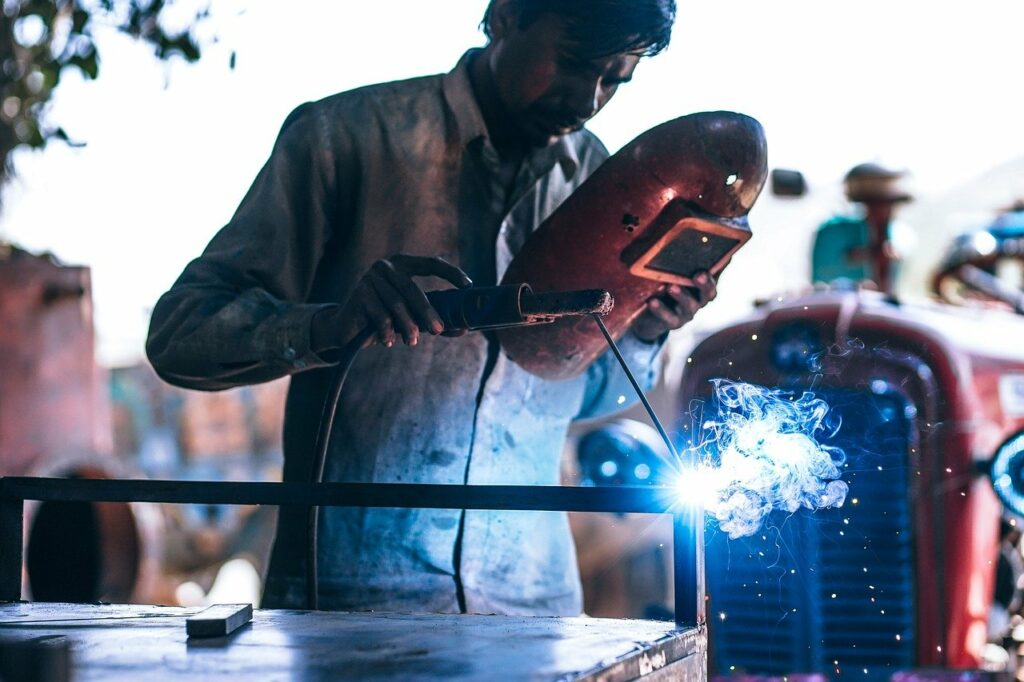绝热过程是在其膨胀或压缩期间没有从工作物质到周围的加热交换的过程。当工作系统进行热绝缘时,这是可能的,即在过程中没有热量可以离开或进入它。所以我们可以这么说在绝热或等熵过程中。
1.热不会留下或进入工作物质(通常是气体)。
2.在内部能量的成本上完成,气体温度变化。
3.完成的工作等于内部能量的变化。
类型
该过程可以分类为可逆或不可逆转。
- 可逆或无摩擦的绝热过程称为等熵过程(其中熵仍然存在
持续的) - 当在过程中考虑摩擦时,比该过程被视为不可逆的绝热过程,其中熵不会保持恒定(即熵增加)
让我们认为,我们认为M kg空气从初始状态1绝地加热到最终状态2和
下面给出了该过程的P-V图:
让
P1,V1和T1 =初始阶段1的压力,体积和温度和
P2,V2和T2 =最终状态2处的压力,体积和温度。
In the P-V diagram that is shown above, a gas in the piston cylinder assembly is heated adiabatically (i.e. not heat leaves or enters into the gas. To prevent the heat exchange from the system, the walls of the cylinder are made perfectly non-conductor. As the gas inside the cylinder is heated, the pressure, volume and temperature increases and it starts to expand.
可逆绝热过程的各种关系如下:











